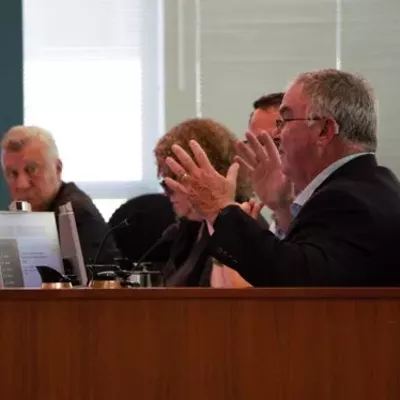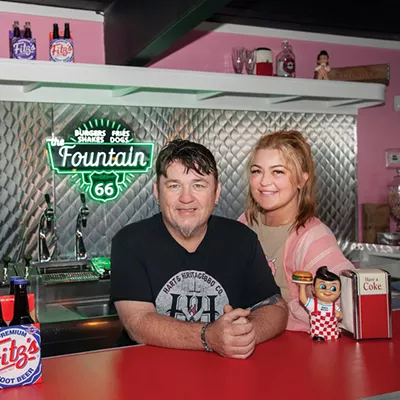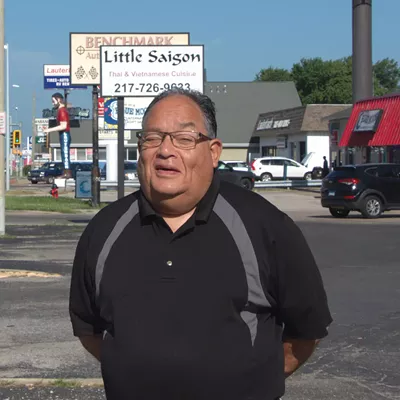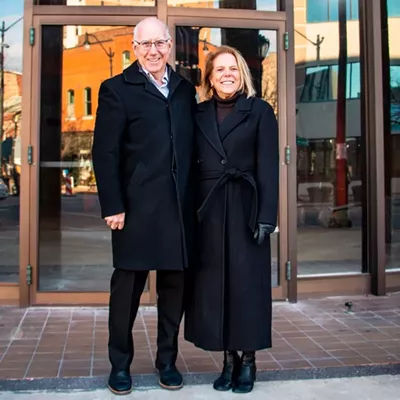SAA has a new building and new ways to engage the community
ARTICLE AND PHOTOS BY DAVID BLANCHETTEIt’s difficult for most nonprofits to survive year-to-year, so when an organization celebrates its 105th anniversary, you know it must be on to something. “I can tell you what season it is based on what fundraiser I’m working on,” said Springfield Art Association executive director Betsy Dollar. “We have something big about every other month. So we finish one and we don’t miss a beat, we move into the next event.” Fundraising events, sponsorships, donations and revenue from the Art Association classes – 750 students enrolled in summer art camp last year – are what keep the organization running. Major fundraising drives like the ongoing centennial capital campaign help to improve and expand Art Association facilities. It’s proven to be the right combination for the organization, but it’s not easy. “Every nonprofit will tell you that we are always fundraising, whether it’s writing grants, seeking individual donors, or holding events,” Dollar said. “That means that we are continually doing some kind of event to raise additional funds.” Fundraising events are the most visible way to garner financial support, but it’s the behind-the-scenes efforts that attract the largest donations. That’s where it gets tougher, according to Dollar. “It’s easy to volunteer for an event and make it a fun day. The not-so-fun part is finding the sponsorship dollars,” Dollar said. “The events themselves don’t make that much money. Where you make the money is finding a sponsor, or a variety of sponsors at a variety of levels.” “Fundraising is the biggest challenge with our 25-member board; it’s something most people don’t like to do,” Dollar said. “But it’s crucial. Our fundraising is what really covers most of the salaries and keeping the lights on or when the furnace blows up. We are this amazing patchwork of a very, very old structure, a middle-age structure, and now brand-new structures, so there’s always something that needs attention.” Successful fundraising requires a strategy, especially in a community like Springfield where the same businesses and individuals are often asked to contribute to most of the nonprofit causes. The Art Association tracks contributors and what each one likes to support, and Dollar said they are careful not to keep asking the same people and businesses for money all of the time. Selling memberships is another proven fundraising method. Art Association members have access to a number of benefits and reduced-cost activities, and this gives the organization a list of known supporters who can be approached to contribute in other ways, such as event ticket purchases or sponsorships. The millennial generation, however, doesn’t seem to be as keen on joining organizations, so this has required a new fundraising school of thought for those 20-to-30-somethings. “They would rather give you a chunk of money that they can see is going directly toward some end result,” Dollar said. “So they will buy tickets, contribute toward planting a tree or doing a specific thing, but for the most part they don’t want to be members.” “We know that they like the arts in general, they want to come and do a bourbon tasting in Edwards Place, or come to Roasted or Paint the Street,” Dollar said. “But even with the discounts on classes, they are less interested in ‘being a member.’ So that requires some new thinking and approaches.” Those new approaches include giving people a one-night taste of an art medium with which they are less familiar, then signing them up for a series of classes once they become interested. Family events appeal to millennials as well because they show that the Art Association has value for both parents and children. The key is convincing the larger public that an arts organization has value. That task was easier for Dollar when she worked in St. Paul, Minnesota, where a much higher percentage of the citizens were “truly engaged” in the arts. People like physicians who are recruited from bigger cities to work in Springfield also bring a desire for cultural input. “Because there is so much competition locally for funds, those people who were born and raised in Springfield have many demands on their charitable giving,” Dollar said.” Art Association development coordinator Mary Beth Burke said that funding competition comes from some compelling sectors. “We’re not feeding the hungry or finding shelter for the homeless,” Burke said. “So it’s really, really hard to raise money for the arts.” The Art Association has discovered that collaboration is the best fundraising strategy when human services and charitable organizations are vying for the same donated dollars. Burke said the Art Association has a program through Kumler Outreach Ministries to help families make Christmas presents with arts and craft supplies. The SAA also coordinates summer art camp scholarships with the Boys and Girls Club. Hope Institute students come to the SAA for art as therapy. The Art Association also works with local hospitals to use art as therapy for Alzheimer’s, dementia, brain injury and stroke patients. “We are providing a service for the entire community, regardless of age or ability. Art is subjective, and if you’re creating art, that is successful,” Burke said. “There’s no wrong answer in art. It provides a positive outlet, a positive therapy, an enjoyable service for everybody.” Burke is coordinating the final stages of the Art Association’s capital campaign, which officially launched on the organization’s 100th anniversary on Sept. 28, 2013. The SAA has raised just over $3 million to date and has approximately $125,000 remaining to reach the goal, she said. The centennial capital campaign has paid for a number of improvements to the Art Association’s campus, which is bordered by Fourth, Fifth, Union and Dodge Streets. The improvements include the first and second story restoration of historic Edwards Place; the construction of the new Visual Art Center that contains the Prairie Earth and Fire Ceramics Studio, Smith and Nickelson Metals Studio and Baima Glass Studio; updates to the existing Condell Studio, where the majority of the organization’s painting, pastels and drawing are done; updates to the back studio, including a new climate control system, lights and wall treatments; and the remodeling of the M.G. Nelson Family Gallery. “Before we even kicked off the campaign, we did about a year of fundraising in a quiet phase,” Burke said. “We held various informational meetings and invited our members and friends of the Art Association. So we started with the people who already knew about us, were involved with us and had a history and connection to the Art Association.” “We tried to secure a large chunk of funding so when we opened it up to the public, it showed that this was a viable project,” Burke said. “That is one of the biggest issues when you have a large capital campaign. Do people think it’s really going to happen? They wait to donate until you have a significant amount already raised.” The Springfield Art Association’s history began Sept. 30, 1913, when the members of a local art study club incorporated and moved into the house now known as Edwards Place, which had been offered to the group by the Edwards family. Today the Art Association provides low-cost, high-quality classes, exhibits and special events to more than 90,000 people each year through its art school facilities, galleries at its main campus, the Hoogland Center for the Arts and the Edwards Place historic house. The Springfield Art Association joined forces with the Prairie Art Alliance in a 2016 merger, giving the local arts scene efforts an even broader focus, according to Dollar. “I’ve been working very hard to create an environment where everybody who is interested is welcome. We want to share ideas and encourage imagination, creativity and flat-out weirdness,” Dollar said. “If we are going to keep moving forward and come up with solutions to all of the things that are going on in the world, we really have to keep thinking creatively and outside the box and encourage imagination.” “There’s a need for a place like this in every community. I want to be the best at that and just give everybody a chance,” Dollar said. “We’ve made it 105 years, and if humanity makes it for another 105, we’ll probably still be here.”











